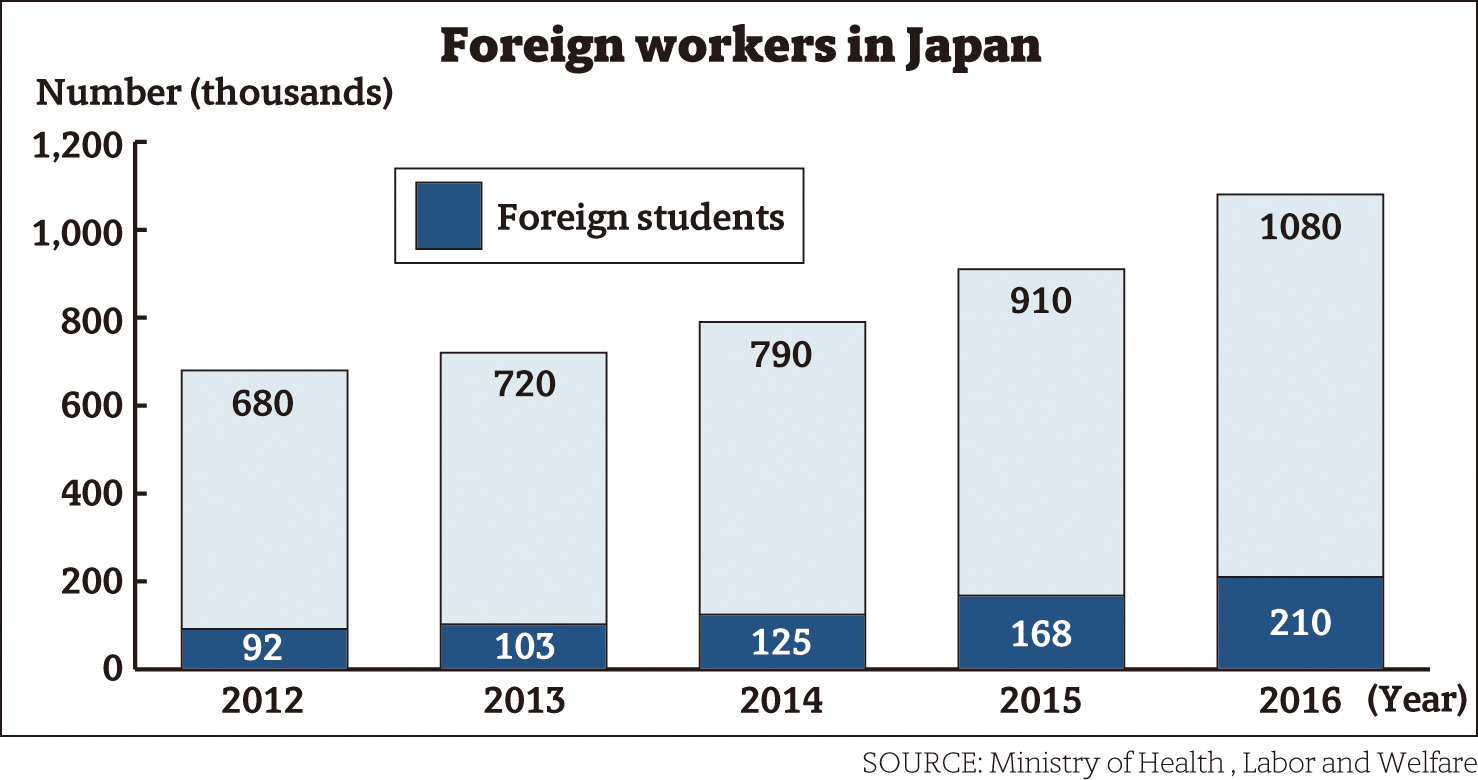Hello!
I follow the Japan Times pretty regularly, and an article came up a couple days ago discussing the number of foreign students who are working in Japan.

The article states that the Ministry of Education’s plan is to reach 300,000 foreign students by 2020, a plan which is well on its way. But it also discusses the policy behind work visas (which do no exist in Japan), and that foreigners with student visas are allowed to work 28 hours a week. Most foreign students are coming from China and Korea, with an increasing number from SE Asia, and they feel compelled to work. This may prevent them from reaching their educational goals. The students in the article are going through language school in preparation for IT or engineering programs. It seems language schools are feeders for unofficial, cheap foreign labor.
What the article doesn’t explain is what proportion of foreign students are genuinely working towards their education goals, and what proportion might be exploiting the system to work in Japan? How many foreign students make it through their language programs and into their higher education program of choice? How many do not make it and have to return home? I imagine, and the article states, that there is incentive to keep these foreign students in Japan to work the low-level jobs, but what are the long term implications if this “under the table” arrangement, especially if these students’ long-term educational goals are never realized?
I’m looking at you Hiro and Sho! And anyone else, of course 🙂
The link to the article is below.
The cost of convenience in Japan: when foreign students work instead of study
Hi, just read this article. Another info; according to the survey conducted by the Ministry of Justice, in 2014, the number of foreign students those who applied for the change in residential status and were approved was 12,958 (11.3% increase from last year). Within this number, 8,347 are Chinese.
Moreover, looking at the sectors, 2,926 (22.6%) work for commercial and trade sector, 1,288 (9.9%) computer-related sector and 1,181 (9.1%) education sector.
I would say this number is relatively low compared to the number of international students in Japan, partly due to lack of rigorous policy to facilitate settlement. However, now the government is trying to welcome foreigners more than ever before toward the 2020 Olympic and Paralympic game, so there may be some possibility for improvement.
Sorry for a delayed comment!
Thank you for sharing the insightful article. I think the foreign student-workers is one of the biggest drawbacks of international student policies in Japan and the Japanese government has to struggle to solve this issue.
As for your first question, I found the data on the proportion of foreign students working from the survey conducted by the Japan Student Services Organization (JASSO), a national agency under the Ministry of Education. According to the survey in 2016, the working ratios of international students at universities, vocational schools, and Japanese language institutes are 71.1%, 82.9%, and 77.3% respectively. The last ratio is the only one which has been increasing in the last 6 years. Most international students who want to enter Japanese universities and need to study Japanese, such as Sampath in the Japan Times article, usually go to the Japanese language institutes.
I also found the data to answer your second question. The Association for the Promotion of Japanese Language Education conducts the survey about the entrance ratio of to the new school after graduation. In 2015, 77.1% graduates entered the new school and 38.7% of them entered universities (including grad school), which could mean they realized their goals.
Although these data are available only in Japanese, I can explain it if you want.
Hey Sho! Wow! Thank you for those stats. You really answered my questions! It seems that the article might have been a bit skewed by the author (it was an opinion piece, after all, I think). What is the “new school” with 77.1% of graduates? Is that a vocational or more advanced language school?